Last week Teagasc held a meeting for people interested in the ongoing salad potato development project. This is being funded by Teagasc, with assistance from the IFA and Bord Bia. The evening was organised by Teagasc’s Michael Hennessy and it involved a discussion on the range of varieties sown at the site. Samples of these had been dug to show the yield and the proportion of total production that fitted in the marketable spec for each variety.
Stuart Wale from SRUC in Scotland attended and there were many points of interest. Salad potatoes must grade between 25 and 45mm and Stuart recommended that test digs be done very frequently using a 42mm sieve because tubers will swell further between burning off and digging.
He said tubers can swell by between 1mm and 4mm depending on the amount of moisture in the ground and when they are sprayed off or topped. Because there is less moisture left in the remaining stem, toppers tend to have the lowest subsequent swell.
When asked about the proportion of above-max grade that he would be willing to accept, Stuart said he really wanted none. He recommends killing the stalks when the biggest tubers are at the 45mm grade. There may appear to be a lot of small tubers at that point but he said the losses on the tops will generally be greater than any benefit to the smalls. While the smalls will grow into spec, some of the marketable grade will grow out of spec. “In general the smalls grow slower than the tops,” Stuart stated.
Desiccation
With regard to killing stalks, Stuart said that he really likes topping because it is close to instant. He also said he has a preference for the Baselier machine because it leaves the haulm quite cleanly in the furrow, allowing the subsequent use of diquat. For those that will burn only, he suggested that the mix of diquat and Spotlight at 1.0 l/ha each is preferable to diquat alone but somewhat slower.
A few of the growers present said they cannot use toppers, except directly in front of the harvester, because crows can do serious damage to the tubers once the haulm is removed.
For those who desiccate with diquat alone, Stuart recommended that growers practice the SMART test to evaluate the moisture content of the row prior to spraying. If the soil is too dry, higher rates of diquat risk producing heel-end-rot in the tubers.
However, Stuart went on to say that diquat can be used in dry conditions if the first application is no more than 1.0 l/ha. Where this is done, there is no sensitivity to a higher rate in the second application, even if conditions remain dry. He suggested using a water rate of 300 l/ha for the first burn and 200 l/ha for the second.
Nitrogen
There was an interesting discussion on nitrogen rate because one of the varieties grown, Viselle, looked particularly yellow relative to most others. Stuart said it is good to see a crop losing colour at the end of its growing season because it makes it easier to manage. This crop had received 110kg N/ha, which may have been slightly too much.
Most of the varieties grown still carried a strong growthy green colour and Stuart said these will be difficult to kill. Viselle had produced a big yield of marketable grade and had no over-size tubers at the time of the dig. The comment was made that N rate does not drive tuberisation – phosphorous is the main nutrient which influences this.
Rooting depth
Stuart said roots do not have to be very deep for salad potatoes because the growing season is so short. However, this assumes there is adequate moisture deep in the ridge at all times, from irrigation or otherwise. Water availability is critical for salads because it is an important tool to help skin finish in particular.
Tuber numbers
The individual varieties were planted at variety specific seeding rates to target the production of 800,000 marketable tubers per hectare. Some varieties had quite an amount of oversize tubers – most obvious in Corelle, Charlotte and Bambino. Stuart said these varieties should have been burned off earlier at this site even though the crop was only 77 days old on the night.
Ventilation
While salad potatoes are smaller, they are still live tubers post-harvest. For this reason, they will respire during storage and where they are put into store at higher temperatures, the rate of respiration will be higher. For this reason it is essential to ventilate to remove the surplus heat being generated during respiration. It is important to get the temperature down in the tubers as quickly as possible post
storage.
Read more
Disappointing start to oat harvest
ITLUS tour: Improved soils provide more and cheaper output
Last week Teagasc held a meeting for people interested in the ongoing salad potato development project. This is being funded by Teagasc, with assistance from the IFA and Bord Bia. The evening was organised by Teagasc’s Michael Hennessy and it involved a discussion on the range of varieties sown at the site. Samples of these had been dug to show the yield and the proportion of total production that fitted in the marketable spec for each variety.
Stuart Wale from SRUC in Scotland attended and there were many points of interest. Salad potatoes must grade between 25 and 45mm and Stuart recommended that test digs be done very frequently using a 42mm sieve because tubers will swell further between burning off and digging.
He said tubers can swell by between 1mm and 4mm depending on the amount of moisture in the ground and when they are sprayed off or topped. Because there is less moisture left in the remaining stem, toppers tend to have the lowest subsequent swell.
When asked about the proportion of above-max grade that he would be willing to accept, Stuart said he really wanted none. He recommends killing the stalks when the biggest tubers are at the 45mm grade. There may appear to be a lot of small tubers at that point but he said the losses on the tops will generally be greater than any benefit to the smalls. While the smalls will grow into spec, some of the marketable grade will grow out of spec. “In general the smalls grow slower than the tops,” Stuart stated.
Desiccation
With regard to killing stalks, Stuart said that he really likes topping because it is close to instant. He also said he has a preference for the Baselier machine because it leaves the haulm quite cleanly in the furrow, allowing the subsequent use of diquat. For those that will burn only, he suggested that the mix of diquat and Spotlight at 1.0 l/ha each is preferable to diquat alone but somewhat slower.
A few of the growers present said they cannot use toppers, except directly in front of the harvester, because crows can do serious damage to the tubers once the haulm is removed.
For those who desiccate with diquat alone, Stuart recommended that growers practice the SMART test to evaluate the moisture content of the row prior to spraying. If the soil is too dry, higher rates of diquat risk producing heel-end-rot in the tubers.
However, Stuart went on to say that diquat can be used in dry conditions if the first application is no more than 1.0 l/ha. Where this is done, there is no sensitivity to a higher rate in the second application, even if conditions remain dry. He suggested using a water rate of 300 l/ha for the first burn and 200 l/ha for the second.
Nitrogen
There was an interesting discussion on nitrogen rate because one of the varieties grown, Viselle, looked particularly yellow relative to most others. Stuart said it is good to see a crop losing colour at the end of its growing season because it makes it easier to manage. This crop had received 110kg N/ha, which may have been slightly too much.
Most of the varieties grown still carried a strong growthy green colour and Stuart said these will be difficult to kill. Viselle had produced a big yield of marketable grade and had no over-size tubers at the time of the dig. The comment was made that N rate does not drive tuberisation – phosphorous is the main nutrient which influences this.
Rooting depth
Stuart said roots do not have to be very deep for salad potatoes because the growing season is so short. However, this assumes there is adequate moisture deep in the ridge at all times, from irrigation or otherwise. Water availability is critical for salads because it is an important tool to help skin finish in particular.
Tuber numbers
The individual varieties were planted at variety specific seeding rates to target the production of 800,000 marketable tubers per hectare. Some varieties had quite an amount of oversize tubers – most obvious in Corelle, Charlotte and Bambino. Stuart said these varieties should have been burned off earlier at this site even though the crop was only 77 days old on the night.
Ventilation
While salad potatoes are smaller, they are still live tubers post-harvest. For this reason, they will respire during storage and where they are put into store at higher temperatures, the rate of respiration will be higher. For this reason it is essential to ventilate to remove the surplus heat being generated during respiration. It is important to get the temperature down in the tubers as quickly as possible post
storage.
Read more
Disappointing start to oat harvest
ITLUS tour: Improved soils provide more and cheaper output






 This is a subscriber-only article
This is a subscriber-only article






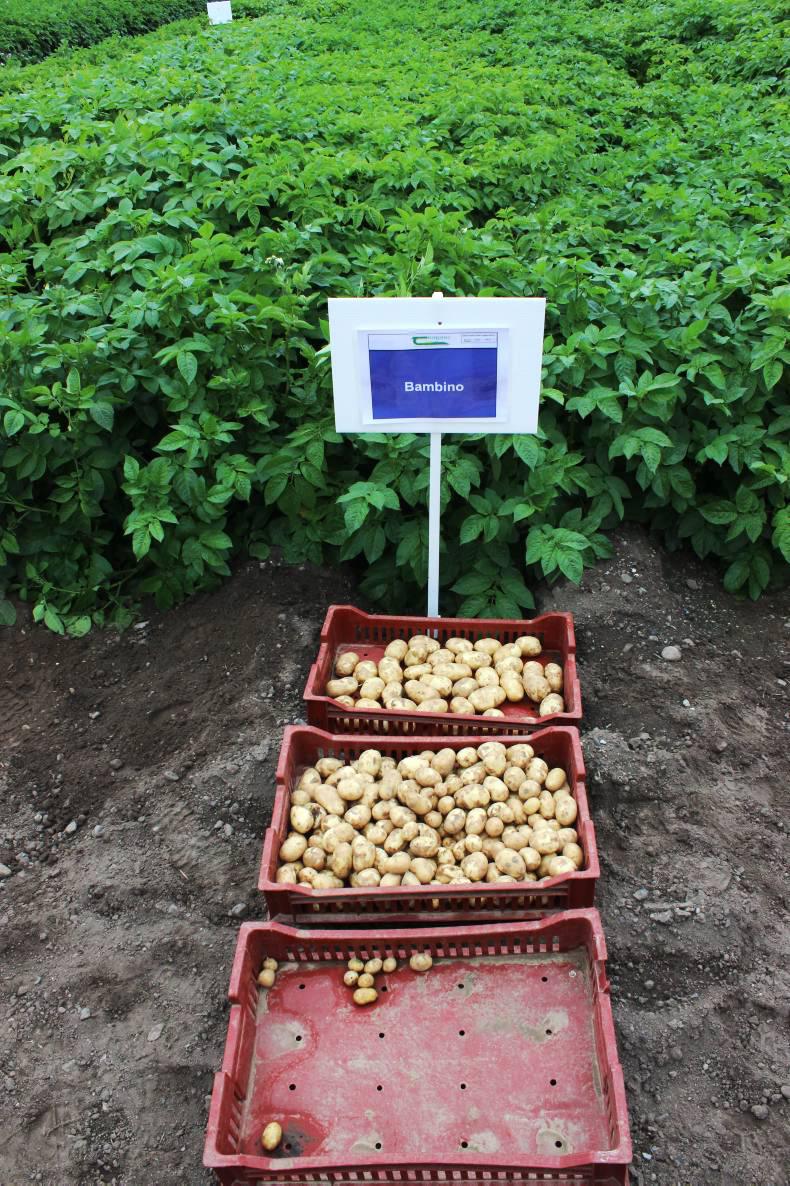


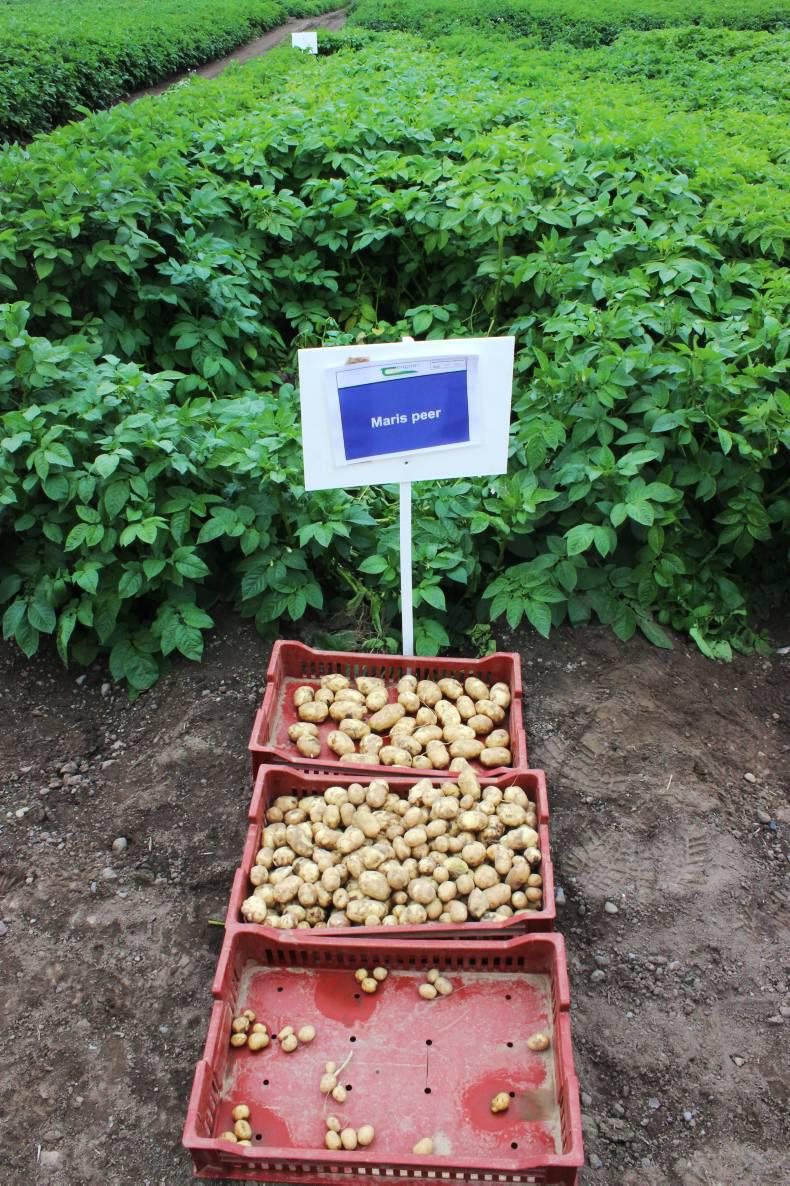
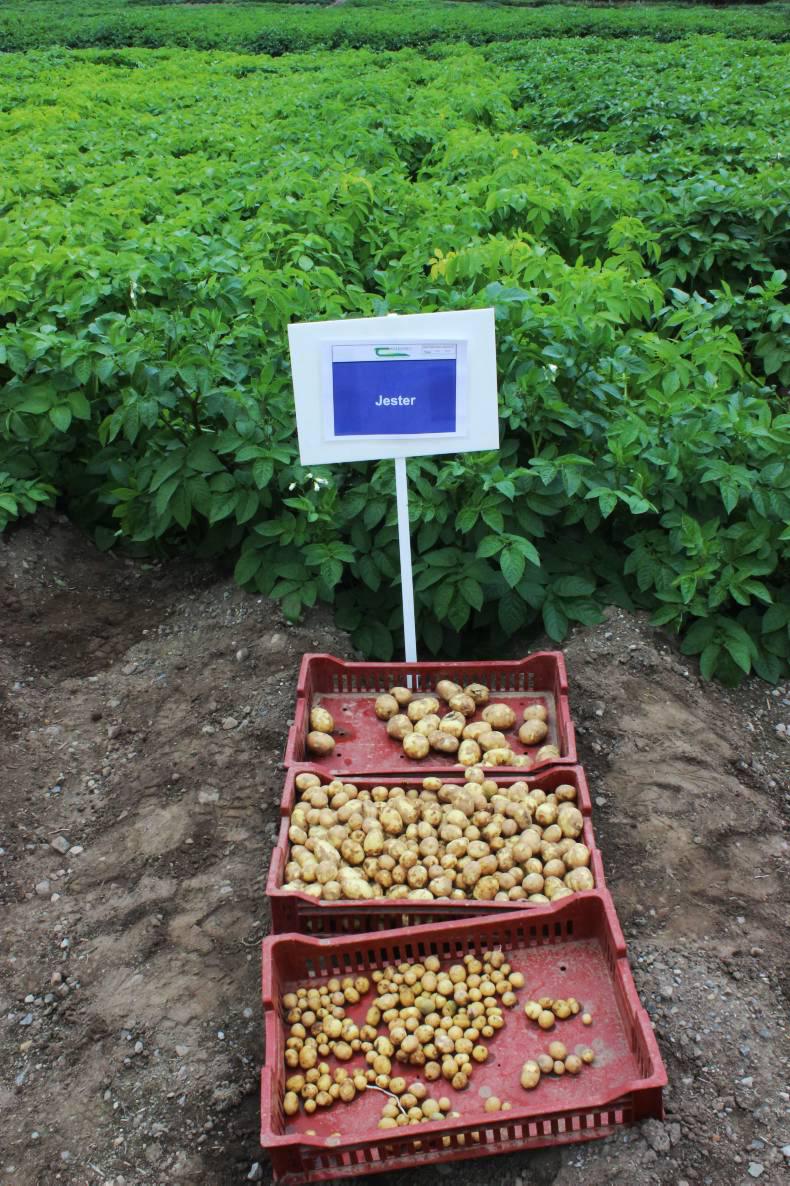
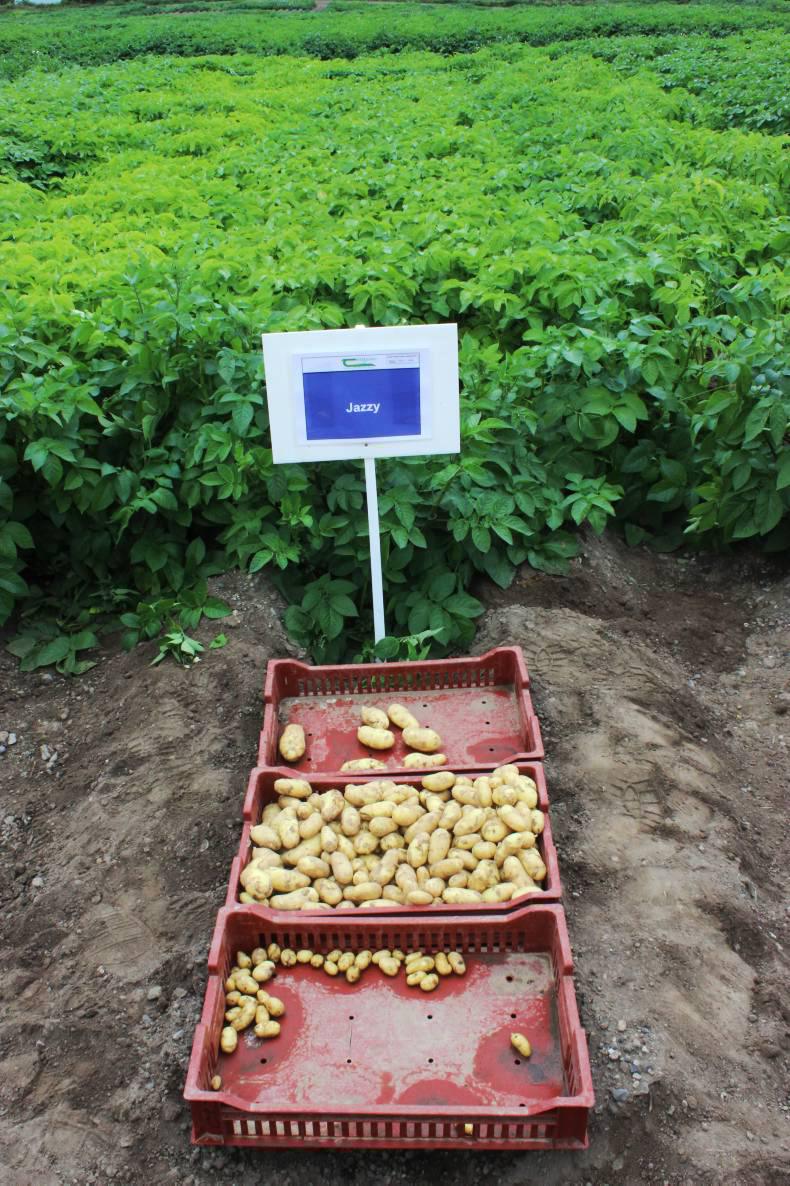

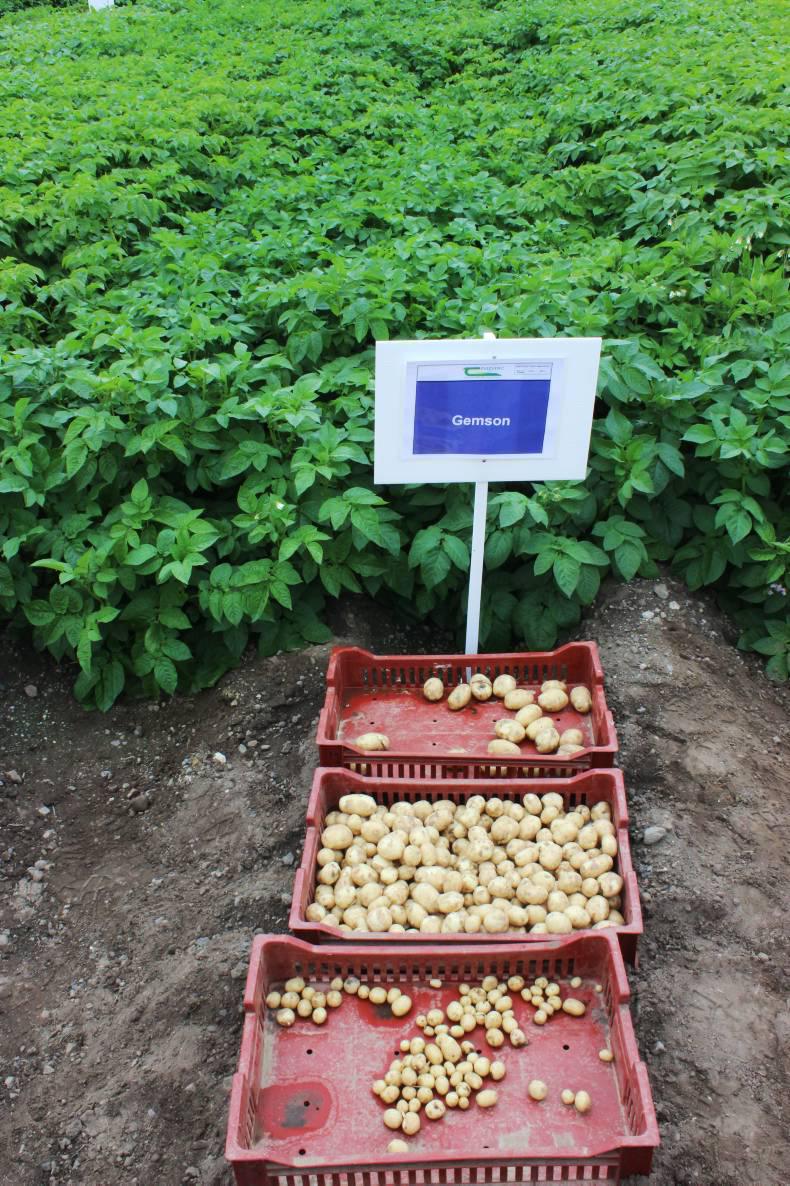

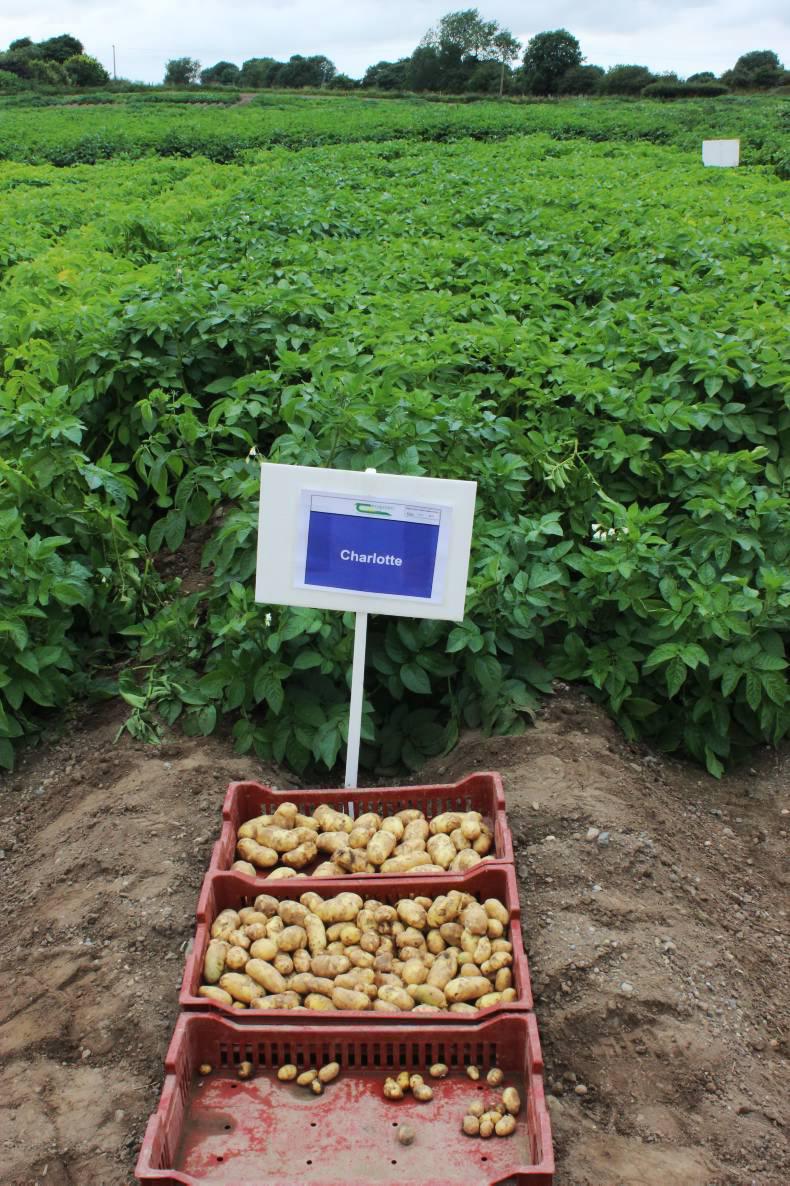
SHARING OPTIONS: